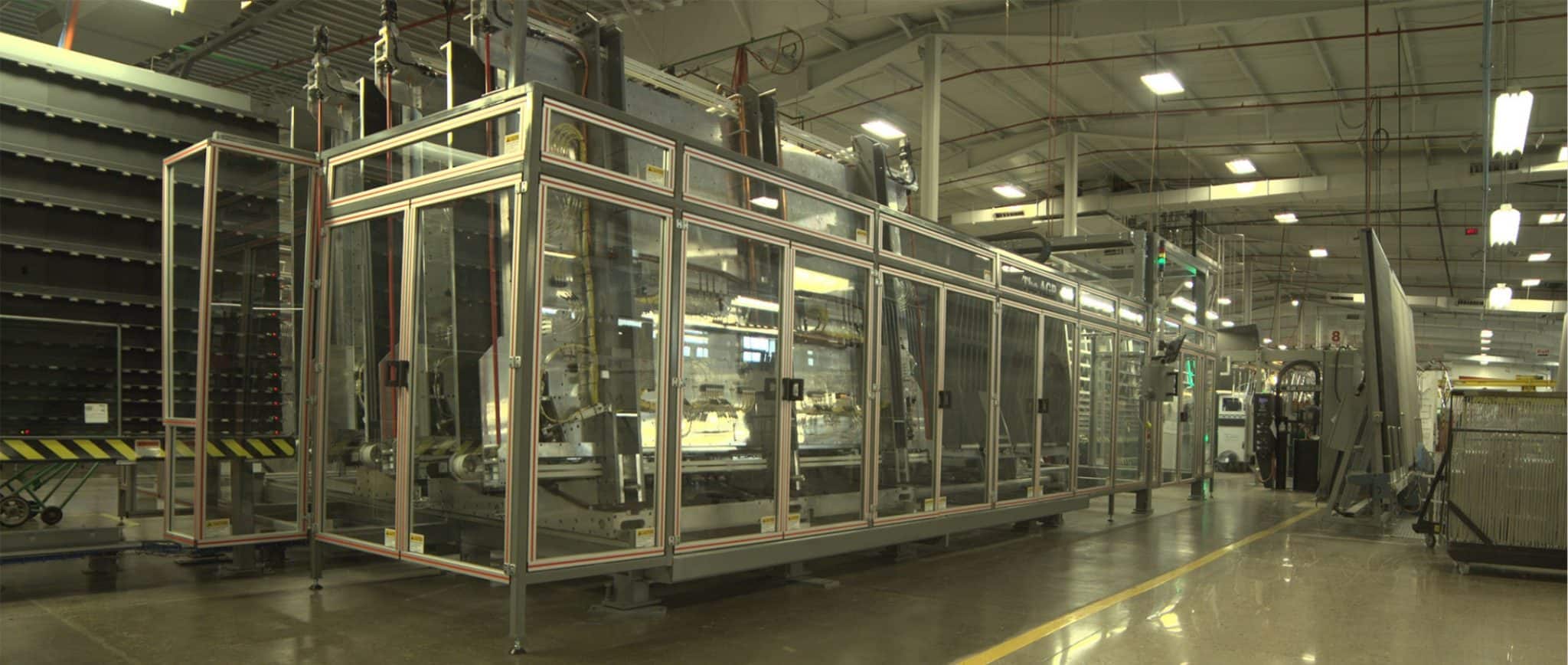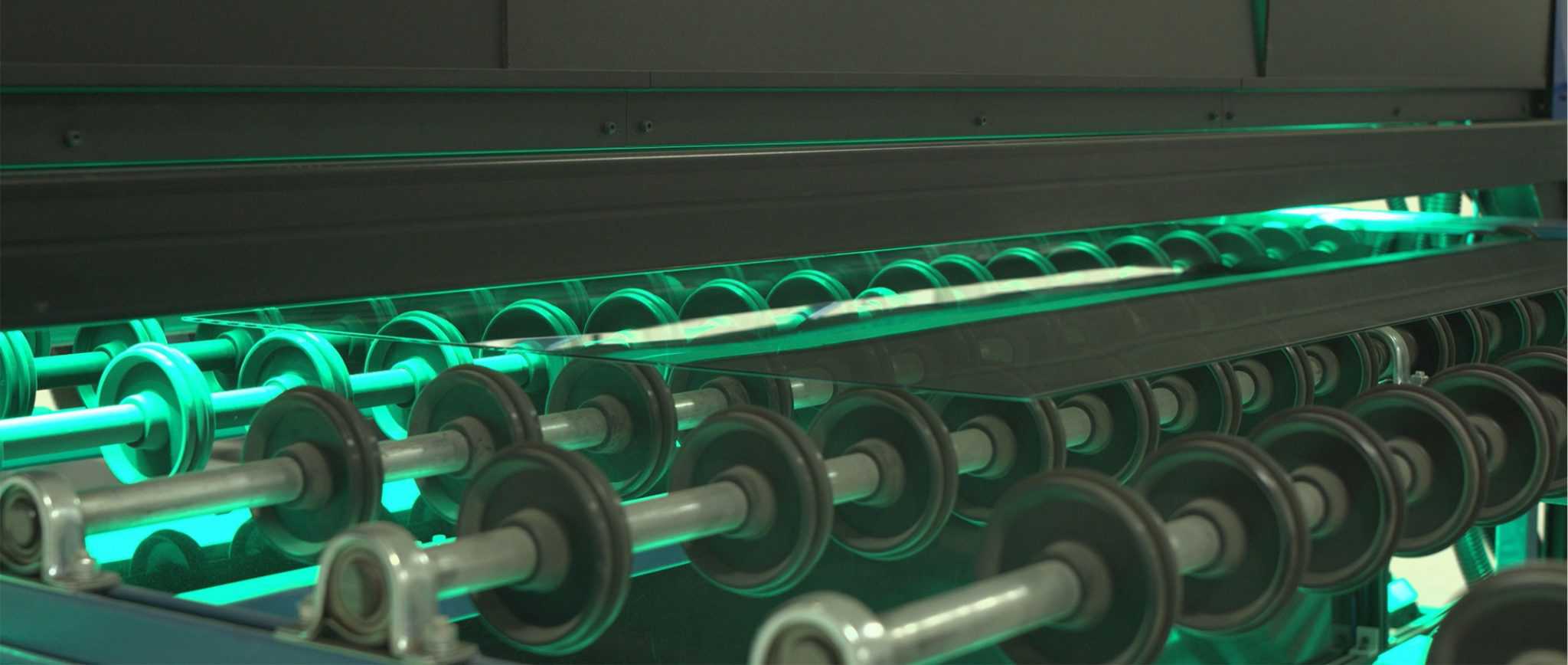Technology
Robot Technology
Innovation is at our core. Here at Cardinal, we push the limits of science and engineering in all the glass we produce. As we advance as a company, our technology does as well. Over the years our processes have become more and more streamlined. We've improved production times and made the day-to-day work for our employees better.
Our robots allow us to make custom windows at an increased rate of 80%. We can receive an order and fulfill it within a day. With Cardinals’ IG technologies, you have our assurance that your window and door products will stay relevant and competitive.
IQ Systems for Insulating Glass
- Washer Quality: The first step towards production of IG units is cleaning the glass. Our washers feature automated water quality tracking systems that monitor PH levels and electrical conductivity.
- Automated Glass Defect Detection: This is where scratches, coating faults and debris on glass surface are detected. The systems accurately characterize defects by size and sort them according to specifications preventing defective glass from proceeding to high value operations.
- Unit Thickness: Our Assembly Gas Press (AGP) ensures the precise thickness of each IG unit to within thousandths of an inch.

Cardinal’s Assembly Gas Press improves IG unit construction quality by automating three processes into one.
- Argon Fill Levels: This system measures the argon fill levels of IG units and verifies initial fill rates.
- Coating Color: A spectrophotometer checks color intensity and hue. To avoid rejection of the unit, each different coating must meet specific color values.
- Center of Glass Thickness: Where possible we do a 100% inspection of all important attributes, including unit or center of glass thickness. If the unit fails, it is not sealed.
IQ Systems for Float Glass
Cardinal leads the glass production industry by maintaining the highest quality standards and through the development of industry-leading processes that meet or exceed customers’ glass specifications. To fulfill our norm, we introduce the Intelligent Quality Assurance Programs. It’s Cardinal’s signature seal for quality.
- Emissions Conformance: It’s our commitment towards environment friendly production throughout our facilities.
- Temperature Control: This is managed by our lehr pyrometer system. It controls glass temperatures and the width of the ribbon, which are critical in the annealing process and minimize our cutting losses.
- Annealing Process: It provides a uniformed glass temperature. This cooling process helps create the inherent strength of the glass and maximizes the ability to cut the finished product.
- 3 Strain Measurements: These accommodate the strain on the ribbon that affects the cutting of the glass.
IQ Systems for Tempered Glass
- Clean Start: Glass is washed prior to tempering. Tempering furnace washers feature a unique water stream particle size counter that can detect minute particles and quantifies them.
- Hawkeye Camera: This high-resolution, high-speed camera is used to detect scratches, coating faults and debris on the surface.
- Tempered Distortion: Competitive inspection systems read the peaks and valleys that develop as part of the tempering process but they report only an average. And not all lites are measured. Our state-of-the-art camera system measures the entire glass, focusing on a series of circles (similar to pixels). The results represent what the human eye sees.

Our state-of-the-art camera system measures glass defects.
- Tempered Glass Orientation: This camera system measures the lites, matches them against the production schedule and assigns identification to our operators. This is used in packaging to prevent and eliminate confusion and mistakes.
- Defect Detection: The system accurately characterizes defects by size and sorts them according to our specifications. This prevents defective glass from proceeding to high value operation.
- Tempered Conformance: All Cardinal tempering facilities equip a photo elastic stress measuring system that identifies areas of non-uniform stress in the glass. Inadequate tempering is highlighted. The system stops unqualified glass products to leave our facility. Furthermore, it allows us to reconfigure procedures as necessary to obtain better heating and quenching. In return, our customers receive high quality tempered glass every time.


